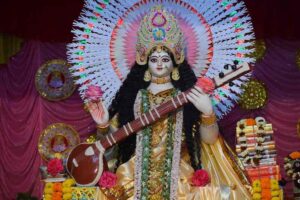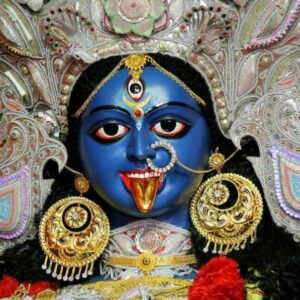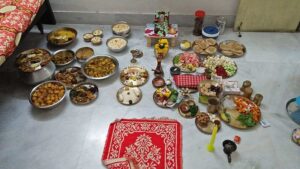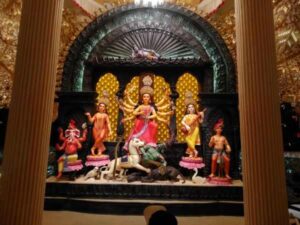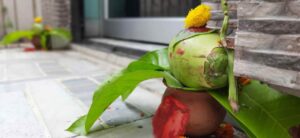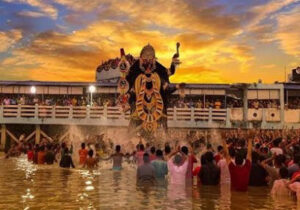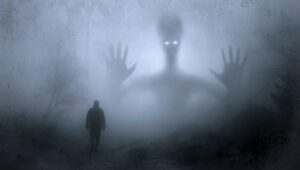While the whole of India celebrates Holi- the festival of colors, in the eastern part of the country, West Bengal, Odisha, and Assam, Dol Jatra, is celebrated with much pomp. Actually, Dol Jatra is no different from Holi, except for the gracefulness with which it is celebrated.
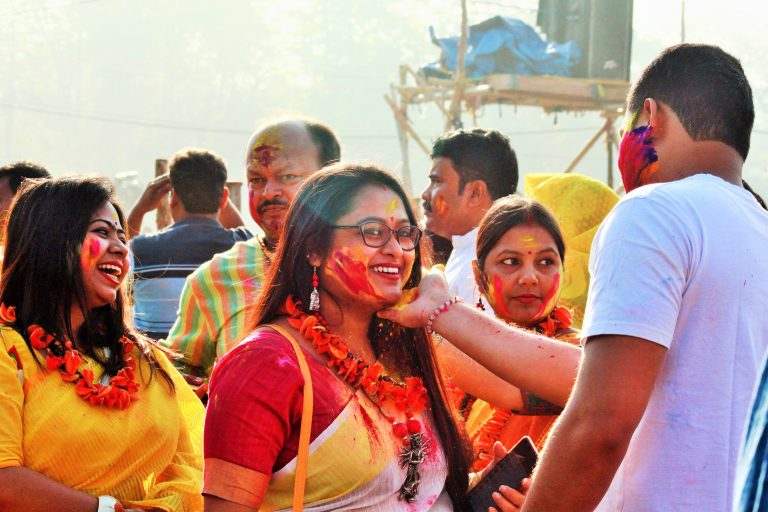
Dol Jatra and Holi both are celebrated in honor of Radha and Krishna. But the way of celebration is different.
Dol Jatra is celebrated a day before Holi, on a full moon day(Purnima). It is the last festival of the Bengali calendar year. In many Bengali households, people perform Satyanarayan Pooja on this auspicious day to bring peace and prosperity.
The history behind Dol Jatra
According to the mythology, on this day, Lord Krishna expressed his love to his beloved Radha. On that day, while Radha and her sakhis were playing around a swing, Lord Krishna smeared her face with Abir or Phag.
To celebrate the union of Lord Krishna and his beloved Radha, their idols richly adorned with colored clothes and jewelry are taken out in the procession in a swinging palanquin decorated with flowers. Colored powder or Abir is smeared on the idols of Krishna and Radha. People throw Abir on one another as celebrations galore. The blaring of conch shells, trumpets, and the chants of Hari Bol keep the procession lively. People take turns swinging the palanquin.
Dol means to swing, and Jatra means journey. So, the festival got its name Dol Jatra.
For Bengalis, the festival is all the more important because it marks the birthday of Chaitanya Mahaprabhu—the revered 16th century Vaishnavi Saint who founded the Gaudiya Vaishnavism. His disciples consider him as the manifestation of Krishna.
There are numerous depictions of Krishna and Radha on a swing in Vaishnava folklore.
Abir – Colored powder an intrinsic part of Dol
Abir or colored powder is an intrinsic part of festivities. While in the rest of the country, people smear liquid colors on each other. In Bengal, people use colored powder or Abir. Bengalis also put Abir to their deities in the prayer room. Also, Abir is applied to pictures of deceased family members.
Visiting relatives or friends’ houses is a customary tradition followed in the evening. The younger generation pay respect to the elders by placing a pinch of Abir on their feet to get their blessings.
Narapora – Bonfire at the night before Dol
Narapora is celebrated the night before Dol. It is also known as Chachor Porano. People indulge in a bonfire, and rituals are performed.
The logic behind Narapora is that it gives people an occasion to accumulate and burn the dried leaves that plants shed in winter. It helps clean the locality, and it also kills mosquitoes and wards off chickenpox.
People circle the bonfire seven to nine times. Children chant the rhyme “Aaj Amader Narapora, Kal Amader dol, Purnima te Chand Uthechhe, bolo Hari bol.”
The myth says that ancient demonic King, Hiranyakashyap instructed his people that no one could worship God. Prahlad, his son, was a devout follower of Lord Vishnu. So, Hiranyakashyap decided to punish his son for disobeying his orders. But, King’s heinous torture and assassination attempt were both futile. Once Hiranya asked his sister demonic Holika to hold Prahlad and sit on fire. King thought that since Holika is immune to fire, she would remain unhurt. However, as the fire set on both of them, Prahlad was saved by the grace of God. But, Holika was burnt to ashes.
The fire festival indicates the killing of demonic Holika and the protection of devotee Prahlad.
This combustion symbolizes the destruction of evil energy and new beginnings.
Basanta Utsav: Celebrating The Advent of Spring
Dol in Bengal is not just a religious festival. It is also about the celebration of the spring season, the last season in the Bengali year, and the beginning of the harvest season.
Rabindranath Tagore started the tradition of Basant Utsav at the Visva Bharati University in Shantiniketan. Colors were made from the differently colored flowers by students and teachers in what has since evolved as one of the most graceful Holi celebrations in the country.
Music and dance are a big part of Basanta Utsav. Singing and dancing, to songs penned by Tagore, are the highlight of the day. The onset of the season of colors is celebrated with equally colorful music, dance, and a lot of safe color-smearing. Liquid colors are not allowed at the Basanta Utsav.
Early in the morning, on the Dol Purnima day, students and teachers dress up in yellow or orange clothes and wear ornaments made of the local shimul flower, take to the streets in a procession called the Prabhat Pheri. They sing and dance to the accompaniment of musical instruments, providing onlookers with an enchanting sight and a memory to cherish for years.
This is followed by a huge cultural program complete with Rabindra Sangeet, Baul music, and striking dance and poetry performances.
In Santiniketan’s Visva Bharati, the Basanta Utsav attracts thousands of tourists each year.
Dol in these parts is, thus, not just a religious festival, but also a festival of nature which is celebrated with gusto – even by the tribal communities of the state.
The festival is regarded as a symbol of unity and happiness.
